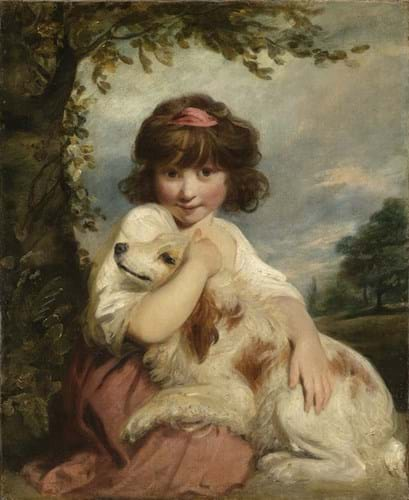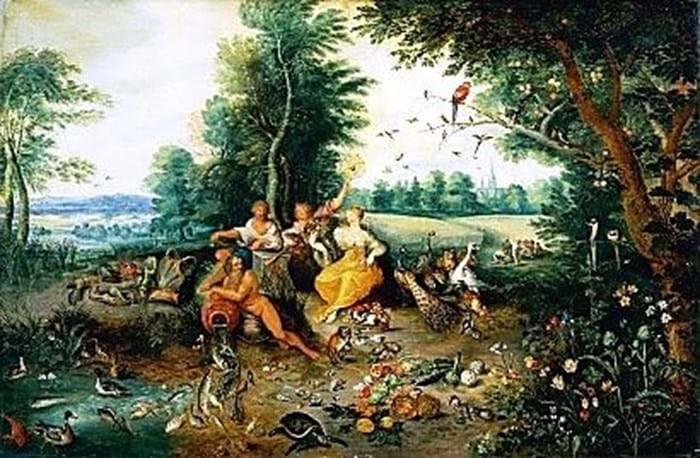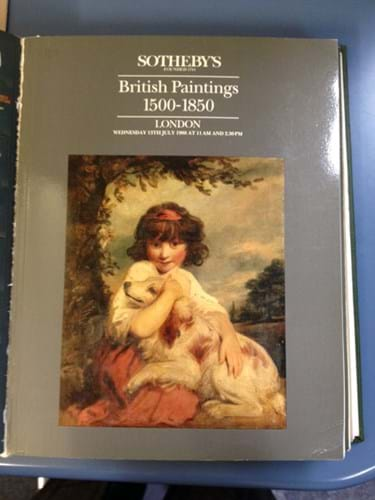
Portrait of Miss Mathew, later Lady Elizabeth Mathew, sitting with her dog before a landscape was among a group of Old Master paintings and family heirlooms taken during a break-in at the East Sussex estate of Sir Henry and Lady Price in 1984.
The theft was reported to the police and received coverage in local newspapers but no arrests were made and the works disappeared.
In the last 30 years, however, the majority of the pictures have resurfaced on the open market and passed through leading members of the trade as well as auctions in London and Paris.
The Reynolds portrait in question emerged at Sotheby’s in 1988 where it was pictured on the front of a sale catalogue. Knocked down at £130,000, it was acquired by a London dealer who later sold it in 1990 to the Tokyo Fuji Art Museum (TFAM) in whose collection it currently resides.
ATG asked Sotheby’s to comment on the sale and whether sufficient due diligence was carried out at the time of the auction and received the following statement: “We have been presented with no evidence to suggest that there is any truth in this suggestion, and would welcome any further information the relevant parties can provide.”
“Painful mystery”
The Price family, now represented by Art Recovery International, are trying to recover the Reynolds from TFAM and are calling on the International Council of Museums (ICOM), which held its 25th General Conference in Kyoto, Japan last week, to intervene.
Christopher Marinello, CEO of Art Recovery International, asserted that ICOM should demand that its member museums comply with its own guidelines. “We call on ICOM to intervene with the Tokyo Fuji Art Museum and ensure a quick resolution of a painful mystery that has caused untold upset in the Price family for more than 30 years,” he said.

A photograph of the Price family home showing the Reynolds portrait of Miss Mathew hanging on the wall to the left.
The Price family are requesting that the painting be removed from display until a resolution of the title claim is reached.
“ICOM guidelines state that member museums must conduct independent provenance research on objects they acquire,” said Marinello. He alleged that, when TFAM acquired the work, “a 46-year gap in the provenance should have been a major red flag for any cultural institution”.
“Good faith purchase”
ATG sent a series of questions to TFAM which responded by claiming “it was never established that the painting that the museum purchased is the same painting allegedly stolen”. TFAM also asserted that it had “acquired full and unconditional title of the painting” as it “purchased it in good faith and without fault from a respectable art dealer with valid title in Japan”.
It also claimed that it wasn’t until 1993 that the “estate administrator of Lady Price started to pursue the stolen painting”.
It added: “The museum’s good faith and faultlessness cannot be questioned.”
Marinello disputes this, claiming there was “every reason the museum would have seen the story of the theft if it done a modicum of due diligence”.
He also contacted the Paul Mellon Centre for Studies in British Art and was told by a representative that David Mannings, the art historian who compiled the Joshua Reynolds catalogue raisonné, “had no doubt” that, in his opinion, TFAM’s picture was indeed the same work that had previously been owned by the family of Lady Price.
TFAM has also said it did not refuse to consider a negotiation with Art Recovery International regarding the possible return of the painting, but has not been able to reach an agreement. It pointed to the 1995 UNIDROIT Convention that requires “a just and reasonable compensation should be granted to the possessor in good faith who returns stolen objects”.
Missing works
Of the 25 paintings stolen from the Price collection, 21 have since been traced by Art Recovery International as being consigned to auction and at least seven have been handled by dealers.
While this figure hardly paints the market in good light, a number of parties have claimed that information about stolen works was less accessible before the launch of databases and recovery groups (the Art Loss Register was founded in 1991) and that details about these lost works in particular may not have been made widely available until later into the 1990s.
Eight works have now been recovered – four Dutch and Flemish interior scenes including two by David Teniers the Younger (1610-1690) which were consigned to Bonhams in 2004, and four hunting scenes by Robert Stone (1820-1870) which were entered into a Christie’s New York auction in 2005.
The works that remain missing include Venetian scenes attributed to Michele Marieschi (1710-1743), Jacopo Marieschi (1711-1794) and Giacomo Guardi (1764-1835); four works by the Brueghel family of artists; three pictures by Sir William Russell Flint (1880-1969); a portrait of Mrs Tickell by John Hoppner (1758-1810) and sporting scenes by Henry T Alken (1785-1851) and William Shayer (1787-1879).

One of the missing paintings that was stolen from the Price art collection is ‘The Four elements - with Vulcan seated by his forge, Neptune, Ceres and Persephone in a landscape’, an oil on panel attributed to Jan Brueghel the Younger (1601-1678).
Marinello opined: “What separates the honourable dealers and museums from the rest is how they handle theft and looting cases after the fact. Are they willing to sit down with the victims and seek an amicable resolution or are they going to hide behind good faith legislation and limitation statutes?”
TFAM is known to have returned at least one work by negotiation before. In 2012 it reached an agreement with Italian Ministry of Cultural Heritage over a design for Leonardo da Vinci’a wall painting The Battle of Anghiari which officials believed was exported illegally at the start of the Second World War. TFAM “donated” it back to its country of origin with a deal reached to loan it back to Japan for subsequent exhibitions.






